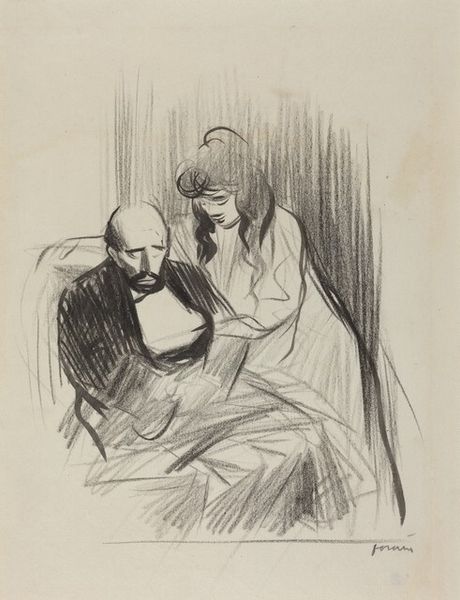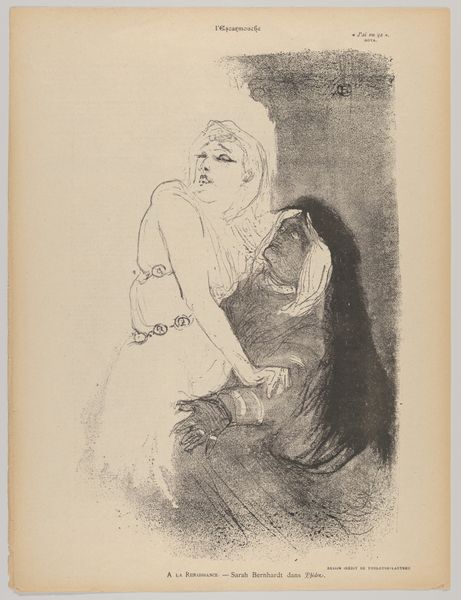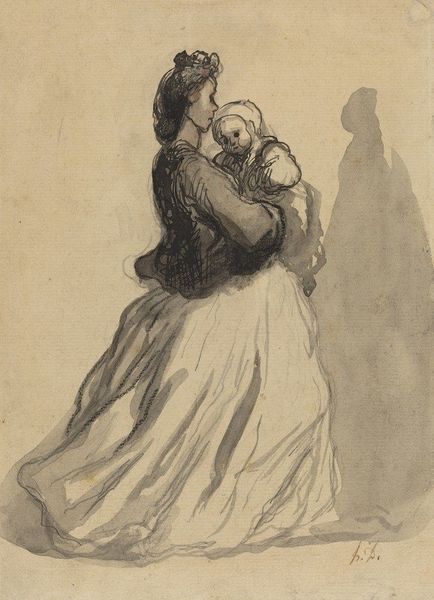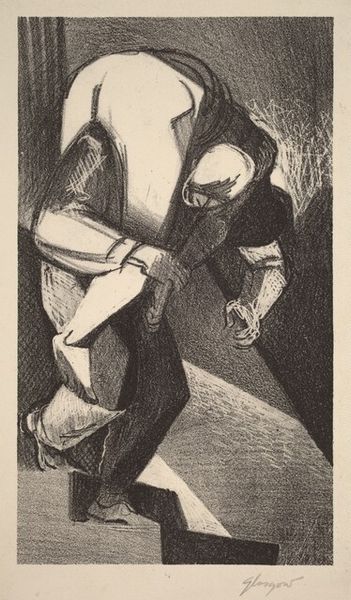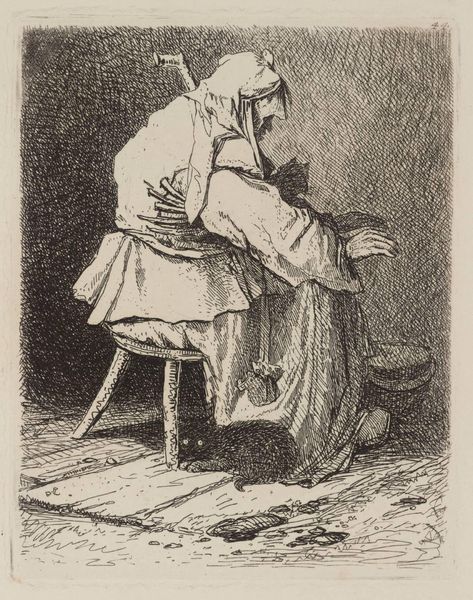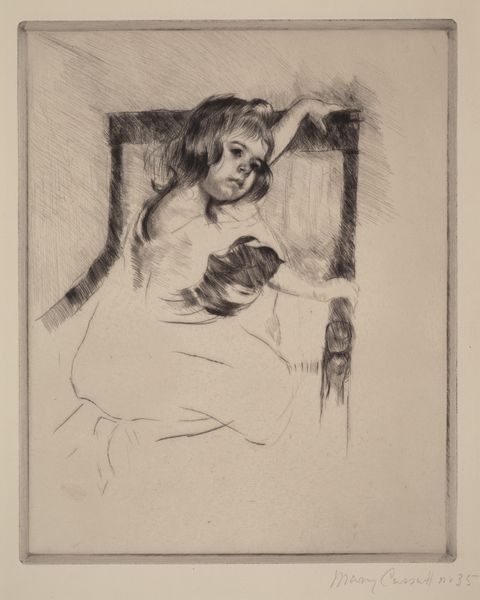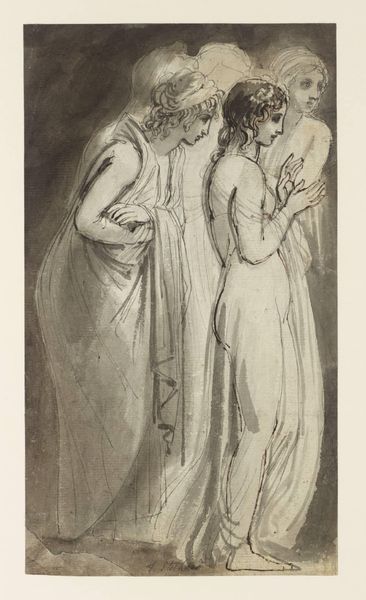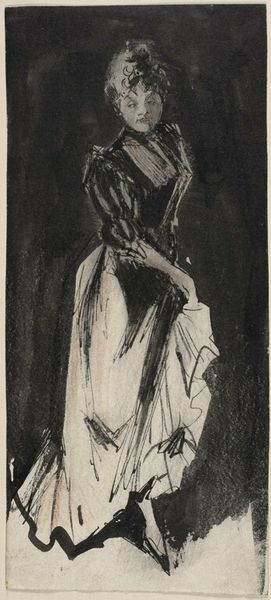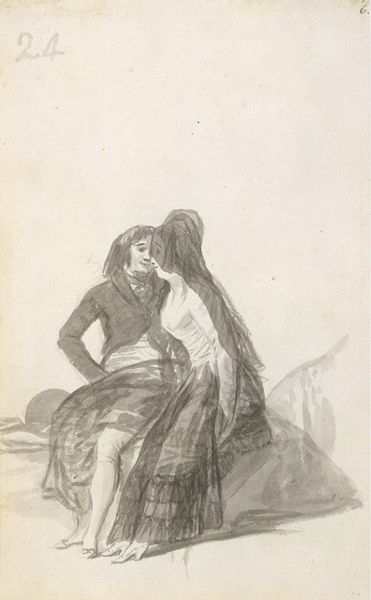
drawing, lithograph, ink, pencil
#
portrait
#
drawing
#
ink drawing
#
lithograph
#
ink
#
pencil drawing
#
pencil
#
symbolism
#
portrait drawing
Copyright: Public Domain: Artvee
Editor: This is Toulouse-Lautrec's lithograph, "A la Renaissance, Sarah Bernhardt dans Phèdre," created around 1892-1893, rendered in ink and pencil. It's quite striking! There's a ghostly figure contrasting with one depicted in much darker tones. What do you see in this piece, particularly regarding its symbolic language? Curator: Lautrec, with his shrewd understanding of the stage, doesn't simply give us a portrait. Look at how Bernhardt, a symbol herself of theatricality and passion, is presented playing Phèdre. Her tragic role is conveyed, of course, but it's more nuanced. Consider the visual weight assigned to each figure; Bernhardt in white, embodying a certain ephemeral quality... but she reaches towards the darkly dressed woman. Who do you think the second figure represents? Editor: Perhaps a physical embodiment of death, or the character's inner turmoil, given the intense darkness used to portray her? The contrast feels very deliberate. Curator: Precisely! It's about duality, yes. We read the theatrical 'Phèdre', but we also see how Lautrec is dissecting a cultural icon, and presenting the timeless archetypes she represents. It’s about desire, fate, the grotesque in the beautiful, all clashing in a potent brew. Do you see that clash echoed elsewhere in the work, perhaps beyond just the costuming and light? Editor: I notice the asymmetry in the composition adds to that feeling, the ghostly figure almost fading out of the frame, and the darker one anchoring the whole image. I hadn’t thought of it in terms of archetypes. Curator: These enduring images tell a timeless story! Each careful use of shade becomes another layer of interpretation, resonating even today, over a century later. Editor: Seeing it like this definitely opens up a whole new understanding of Lautrec's work for me. Thanks!
Comments
No comments
Be the first to comment and join the conversation on the ultimate creative platform.

